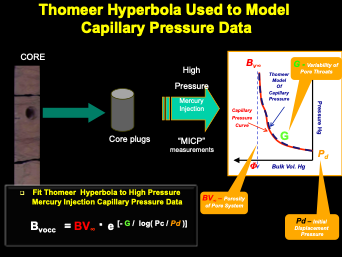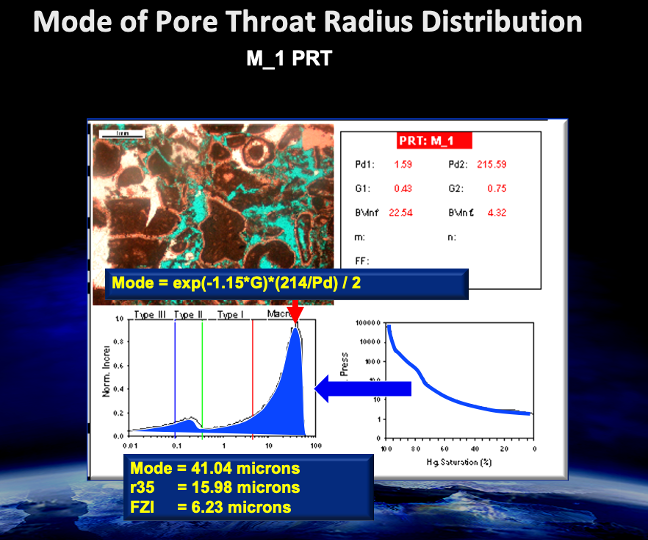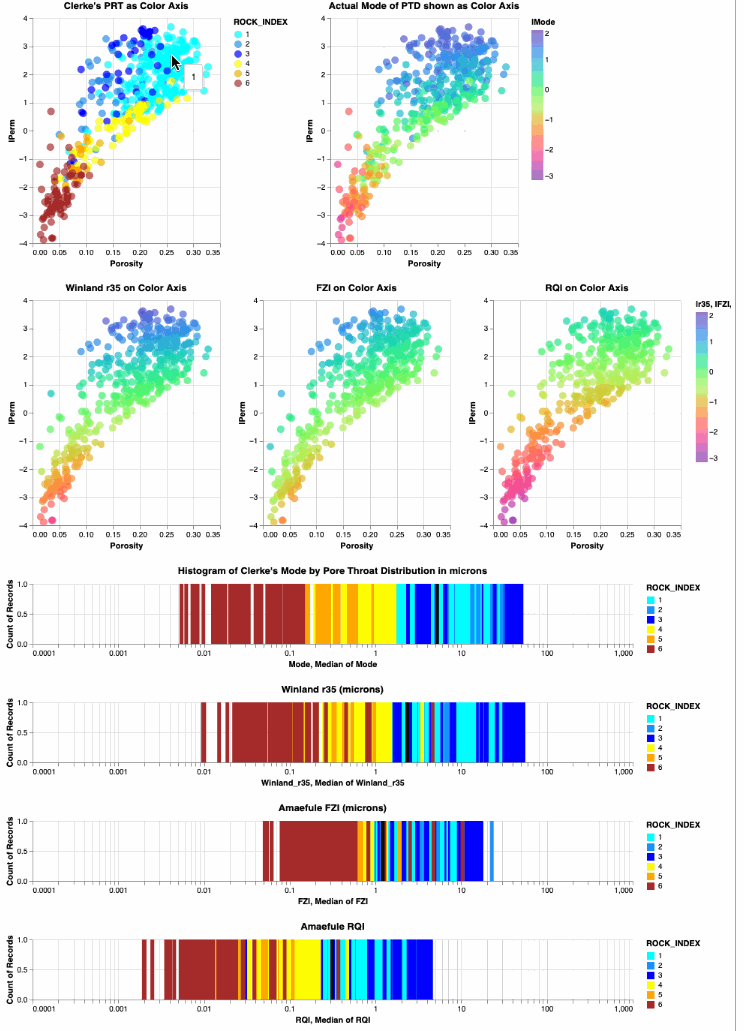The objective of this project is to interrogate Petrophysical core data using python's interacive Altair.
Download the RosettaStone_GitHub_brief.html file to demonstrate the interactivity before loading Altair on your system and running the Jupyter Notebook.
Clerke's Rosetta Stone Arab-D carbonate data(1) is show below in the display of our data. This is Core analysis data. The Permeability (and log10 of perm lPerm) and Porosity are from the routine core analysis data. Clerke masterfully selected this dataset starting from thousands of qualified, inspected plug samples where the final samples were randomly selected from the group to create a very unique in that covers the full range in poro-perm space and Petrophysical Rock Types (PRTs).
High Pressure Mercury Injection (HPMI) was performed on each of the core plug samples too. The HPMI data was fit to the Thomeer hyperbolas for each pore system giving us the Thomeer parameters Pd, G and Bulk Volume Occupied for each pore system found in the plug sample.
- Clerke, E. A., Mueller III, H. W., Phillips, E. C., Eyvazzadeh, R. Y., Jones, D. H., Ramamoorthy, R., Srivastava, A., (2008) “Application of Thomeer Hyperbolas to decode the pore systems, facies and reservoir properties of the Upper Jurassic Arab D Limestone, Ghawar field, Saudi Arabia: A Rosetta Stone approach”, GeoArabia, Vol. 13, No. 4, p. 113-160, October, 2008.
A Thomeer hyperbola is fit to the HPMI data by optimizing on the Thomeer Parameters G1, Pd1 and BV1 for the first pore system and G2, Pd2 and BV2 for the second. The following image relates the Thomeer hyperbola (dashed black line) to the Capillary Pressure Curve (solid red line). Ed Clerke used hist famous Thomeer Parameter spreadsheet with solver to determine the correct set of Thomeer parameters for each sample.
After all the Thomeer parameters were assigned to all the samples, then Ed used the distributions of the the Initial Displacement Pressure (Pd) to devise his Petrophysical Rock Types (PRT) scheme.
Most macro rock typically has a dual porosity system where the Pore Throat Distribution (PTD) will have two modes as shown below.
The macro portion of the rock will have a mode greater than 2 microns with a second (or third) mode less than 2 microns. Probably the most abundant PRT is the M_1. This is a macro-porous rock with a mode in the macro portion of the PTD and a second mode in the meso-porosity range. In this PRT both the macro pores and meso-porous grains can have oil saturations once the capillary pressure is great enough to drive out the water. The M_2 PRT is also a macro rock, but the second pore system is micro-porous and is too tight to have hydrocarbon saturations. The Table below shows Clerke's description of his PRT's.
The following are some example results using Altair where the data in cross plots can be selected and then the appropriate data for those selected samples are shown in the bar charts below the cross plots.
We are using Conda on a mac and Altair works fairly well in a jupyter notebook. To run as pure python program altair_viewer must also be used to render the images to a html web page. We are low on the learning curve with Altair finding new capabilities each day. Consider this repository an example of where we are today.



